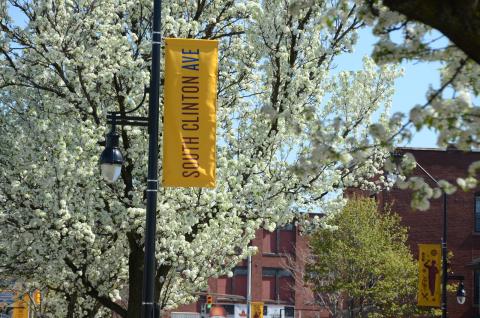Certificate of Occupancy FAQ
C of O Inspection Information Q&A'a
- All rental units built before 1978 (Proactive testing occurs in properties included in the High-Risk areas, unless cited for deteriorated paint)
- Applicable to inspections required by law, such as Certificate of Occupancies, Complaints, Quality Housing Inspections, and referrals.
- §90-55 City Ordinance
- Inside all sleeping areas
- Adjacent to all sleeping areas
- On every story within the dwelling unit, including basements but not including crawl spaces and uninhabitable attics
- 19NYCRR(1226)§704.2
Structures built before January 1, 2008 (these alarms can be battery or plug-in type):
- One and 2-family dwellings:
- Within each dwelling unit or sleeping unit on the lowest story having a sleeping area
- Multiple dwellings:
- Within each dwelling unit or sleeping unit that contains a carbon monoxide source, on the lowest story with a sleeping area.
- Within each dwelling unit or sleeping unit on the same story as a carbon monoxide source, on the lowest story with a sleeping area.
- On every story where there is a carbon monoxide source and no sleeping areas
- 19NYCRR(1225)§
Structures built on or after January 1, 2008 (these alarms must be hardwired and interconnected):
- All Dwellings
- Within each dwelling unit or sleeping unit on each story having sleeping areas
- Within each dwelling unit or sleeping unit on each story where a carbon monoxide source is located
- 19NYCRR(1225)§610
Exception: a carbon monoxide alarm is not required if there is no carbon monoxide source within or attached to the structure.
- The Building Owner's Registry legislation requires owners of all properties, other than those mentioned below, to submit the following contact information:
- Owner's name - must be natural. If an LLC must list the name of a manager, principal, or agent
- Mailing address - cannot be a post office box
- Business phone number
Click here for the Building Owner's Registry
- This information must be submitted during the renewal of the property's Certificate of Occupancy or sooner if notified by the Director.
- Owners of properties that are required to have a Certificate of Occupancy as per section 90-16 of the City Code must register a property maintenance point of contact. If the owner resides outside the 13 or 14 zip code areas, the point of contact must reside within Monroe County.
- Exempted properties:
- Owner-occupied one or 2-family dwellings
- Buildings owned by local, state, or federal government units
- Hospitals
- Schools, colleges and universities
- Commercial or Industrial buildings with 24-hour operations or security
- §90-20
- Every habitable space in a dwelling shall contain at least two separate and remote receptacle outlets.
- Every bathroom shall contain at least one receptacle. Any new bathroom receptacle outlet shall have ground fault circuit interrupter protection.
- Every laundry area shall contain at least one grounded-type receptacle or a receptacle with a ground fault circuit interrupter.
- 19NYCRR(1225)§605
- All swimming pools, hot tubs, and spas capable of containing water more than 24 inches deep at any point must be properly enclosed - 19NYCRR(1226)§303.2.
- All swimming pools, hot tubs, and spas capable of containing water more than 24 inches deep at any point and constructed or substantially modified after December 14, 2006, shall be equipped with an approved pool alarm - 19NYCRR(1226)§303.6.
- Hot tubs and spas with a safety cover that complies with ASTM F 1346 are exempt from the enclosure requirement.
- Swimming pools, hot tubs, and spas with a safety cover that complies with ASTM F 1346 are exempt from the pool alarm requirement.
- Any open portion of the stairs, landing, balcony, porch, deck, ramp, or other walking surface that is more than 30 inches above the floor or should have guards
- Guards shall not be less than 30 inches in height
- 19NYCRR(1226)§306
- Every flight of stairs having more than 4 risers shall have a handrail on one side of the stairs.
- The handrail shall not be less than 30 inches and no more than 42 inches in height.
- 19NYCRR(1226)§306
- Heat must be provided by the property owner from September 15th to May 31st and be maintained at a minium of 68 degrees.
- A call by the tenant to the property owner BEFORE contacting your Neighborhood Service Center is the best courtesy to obtain compliance.
- If contact with the landlord is unsuccessful or if the landlord refuses to correct the problem, a representative from your local Neighborhood Service Center will attempt to contact the landlord.
- If the landlord continues to be uncooperative, an inspector may then be sent to the property to assess the situation.
- If your heat is not restored within 2 days, the owner is subject to being ticketed.
- Additional options for the tenant include:
- If the tenant is on DSS, contact the social worker for emergency housing
- If the tenant is not on DSS, the Salvation Army has emergency housing
- Stay with a relative or friend
- 19NYCRR(1226)§602
- Note: This is considered a civil matter - the Bureau of Inspection & Compliance Services, the Neighborhood Service Centers and other city departments are not legal consultants.
- You may contact the Monroe County Legal Aid Society, 1 West Main Street, 4th Floor, Rochester, NY (585) 325-2520.
- You can obtain the NYS Tenant Rights Guide from the NYS Attorney General's Office at 144 Exchange Blvd.
- No unlicensed or unregistered vehicles are allowed on any residential or unauthorized commercial property within the city limits.
- Options to abate the violation include:
- Storing the vehicle in an enclosed garage
- Registering the vehicle
- Obtain a 6-month storage permit from the City
- Remove the vehicle
- §120-163D
A Conditional C of O can be requested if temporary occupancy of a building is required before all the necessary work is completed. A Partial C of O can be requested when permanent occupancy of a portion of a building is required, before the entire work covered under a building permit is completed, or when the use is being changed to only a section of the structure.
In either situation, the appropriate C of O fee must be paid, the property must comply with the Zoning Code and all health and safety violations must be abated.
A Maintain Use building permit is used to legalize a structure or a portion of a structure when it can be demonstrated that the use complied with the code that was in place at the time the use began.
An Establish Use building permit is used to legalize a new use of a structure or portion of a structure.
Per the Residential Code of New York State, applicable for all one and 2-family detached structures less than three stories in height, Section J502.4.3 states as follows:
- Where the existing roof or roof covering is water-soaked or has deteriorated to the point that the existing roof or roof covering is not adequate as a basis for additional roofing.
- Where the existing roof covering is wood shake or shingle, slate, clay, cement, or asbestos-cement tile.
- Where the existing roof has two or more applications of any type of roof covering.
Exceptions:
- Complete and separate roofing systems, such as standing-seam metal roof systems, that are designed to transmit the roof loads directly to the building's structural system and that do not rely on existing roofs and roof coverings for support shall not require the removal of existing roof coverings.
- Installation of metal panels, metal shingles, concrete, and clay tile roof coverings over existing wood shake or shingle roofs shall be permitted when the application is under Section J502.4.4.
- Applying a new protective coating over existing spray polyurethane foam roofing systems is permissible without needing to remove the current roof coverings.






